It’s taken me almost ten years after Peanut’s passing to get a new heart dog, but she’s finally arrived!
A month ago, we brought home a new puppy, a Rat Terrier x Australian Cattle Dog. She’s 5 months old and is already lighting up my life.
I can’t believe it’s been almost a decade. How did I get here? First a quick pause to meet Mesquite:
Don’t get me wrong, I’ve had dogs this whole time. Bean was already in the home for a year when Peanut passed away from cancer. I had time to fall in love with Bean. After Peanut died, I got a second dog for him, Zuki, when I knew I wasn’t ready, but she needed a home and Bean enthusiastically chose her. I was heartbroken when Bean died at age of five, in the jaws of a coyote. We still have Zuki, and my husband has also gotten a Lab, his own heart dog, Joey.
As much as I do love Zuki, and as much as it pains me to say, she’s not my heart dog. I think it’s mostly due to getting her too soon after losing Peanut. Ever since Bean passed, I’ve been without a heart dog, as part of a person. I’m not just me, I’m part of a We that includes a canine partner.
 Now that I’m reinvigorated and inspired in my work with dogs again, I feel safe enough to vulnerably admit that it’s been hard to summon passion for dog training since losing Bean. Grief had rooted in the places where curiosity about dogs normally lives. I’m the best teacher when I’m also a learner, and I didn’t have my own heart dog to practice with. My heart dogs are also my muses, my greatest teachers, my reason to keep being so fascinated with every head turn, every lip lick, every choice. So many dog trainers burn out and I wonder if we need more grief support in this industry.
Now that I’m reinvigorated and inspired in my work with dogs again, I feel safe enough to vulnerably admit that it’s been hard to summon passion for dog training since losing Bean. Grief had rooted in the places where curiosity about dogs normally lives. I’m the best teacher when I’m also a learner, and I didn’t have my own heart dog to practice with. My heart dogs are also my muses, my greatest teachers, my reason to keep being so fascinated with every head turn, every lip lick, every choice. So many dog trainers burn out and I wonder if we need more grief support in this industry.
I’m grateful that we have had so many amazing collaborations at the GSA because so many amazing humans brought their insightful fire and spirit, and I’ve been able to showcase them. I’m also grateful for the folks who have been learning BAT from past Grisha in all of the self-paced classes. Every time I hear of a dog living their best life because of my work, or a new person gets certified in BAT, I get a little spark of joy and inspiration. It’s been enough to keep me going, but I’ve still been craving the missing part of my heart.
I focused on mourning deliberately when Peanut died and took the time to grieve when Bean was killed, too. Grief has become a special interest of mine, especially after becoming a widow, and I even took classes to learn how to hold grief spaces for others. I am so glad I leaned into my grief intentionally, as it was able to soften much of the heartache I carried. At the same time, there was still more in there, more to grieve in community grief spaces, in conversations, and alone on walks.
I mentioned that grief took up residence in the part of me where my love for dogs lived. This impacted my work. Peanut is at the heart of BAT. He inspired the core of my interest in dogs, and of course, he was my greatest teacher. The most obvious grief was in the first year, when it hurt to show videos of him in workshops. Over time, it became invisible, even to me. I experienced joy thinking of him, not sorrow. Every so often, in a deep community grief ritual, I’d be able to pull up some unprocessed bit of the loss and release it. What I didn’t realize is that I still had some numbness to feel into.
I’d been starting to get curious about having another puppy for the last half a year or so, little sparks of ‘maybe.’ And then last month, the final piece that was holding me back from falling in love with a dog again was able to melt.
I was facilitating an online grief space and ended up, coincidentally, needing to do the Zoom session from my car. I was visiting Seattle, where I lived when Peanut and I fir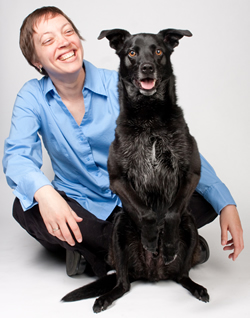 st became family. I decided to park my car outside of the apartment I lived in when Peanut came home to us, two-pounds of black furry puppy-ness.
st became family. I decided to park my car outside of the apartment I lived in when Peanut came home to us, two-pounds of black furry puppy-ness.
When my turn came to share, the dam broke, and I cried and shared sorrow I didn’t realize I was carrying. After the session, I walked around the neighborhood and thought tenderly of his puppyhood. On the drive home the next day, I decided to get a puppy, but set a timeline for after Zuki passed away. Her nervous system is set high and I didn’t want it to influence the puppy.
But then I spoke with Claire Goyer, who is the administrator of the Grisha Stewart Academy. She gave me more space to share my feelings and talk through the reasoning. We were able to work through ideas of how to navigate the training for the puppy, and I decided the very next day that it was time to find my new heart dog. I’m so grateful for Claire’s patient listening.
I found Mesquite (aka Keeti/Mosquito/Keto) at a local rescue on Petfinder. I was hoping to find a dog who was chill and easy, already socialized. But you get the dog you need, not the dog you want. She had basically never walked outside except in a backyard. Her little paw pads were bright pink. She was terrified of noises, people, dogs, and so much more. And yet in her comfort zone, she’s outgoing, bright, eager, and a bit pushy. It’s been a month and BAT has been working wonders with her.
I have to admit, that despite BAT helping so many dogs, I’ve been battling with a sort of imposter syndrome without Bean and Peanut around. That somehow I’m not qualified to teach people about how to support their dogs if I don’t have a dog of my own that I’m excited to train and work with. That maybe I’ve lost my chops.
Working with Mesquite and watching her quickly open up to this new-to-her world has helped my doubts fall away. I remember why I developed BAT in the first place, and I’m just in awe of it’s effectiveness now as I was then. I remember why it evolved and experience so much joy seeing BAT work for her.
Most importantly, I don’t have to feel like an expert any more. I can feel like a beginner, just a dog mom who is in love and curious and excited to share what works. I’m weaving in more bonding and play and taking note of what survival skills help her the most. BAT feels alive to me again, as I learn how to apply it to expand Mesquite’s world.
If I had it to do the last 10 years again, the main part I would change is my self-doubt that convinced me that numbness was some sort of character flaw, instead of a sign that more grief needed to be felt.
Thank you community grief work for bringing me to this place of acceptance. Thank you Peanut for still being part of my heart, always and forever. Thank you Mesquite, for helping my heart beat again. Also thanks you to the folks over the years who have helped keep BAT alive and have kept my interest in dogs afloat.
So back to my question at the top, when is the right time for a new heart dog? For me, it’s right now. I think it’s just whenever your heart says you’re ready. You may be able to fall in love a month after your dog passes. It might be a year. Or ten. If you’re not ready yet, if you’re feeling numb or resentful or tearful, don’t worry. Just keep leaning into the work of grief. Tears are medicine for the soul. Shed them. We’re all different. Don’t rush it.
Your capacity to love a dog is a treasure that’s just waiting to be found again.

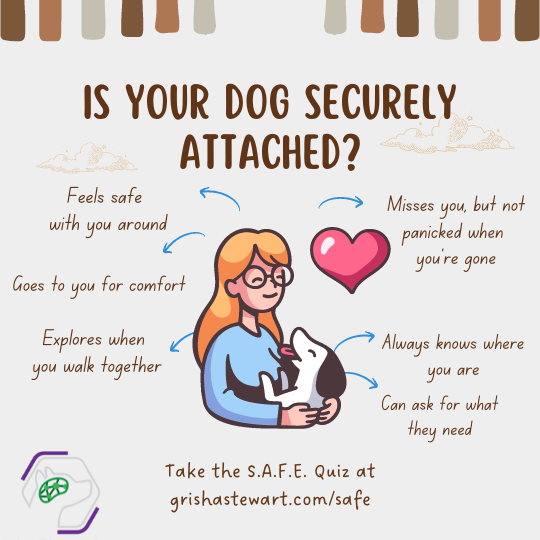
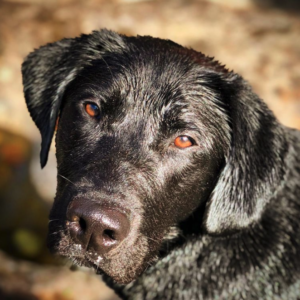
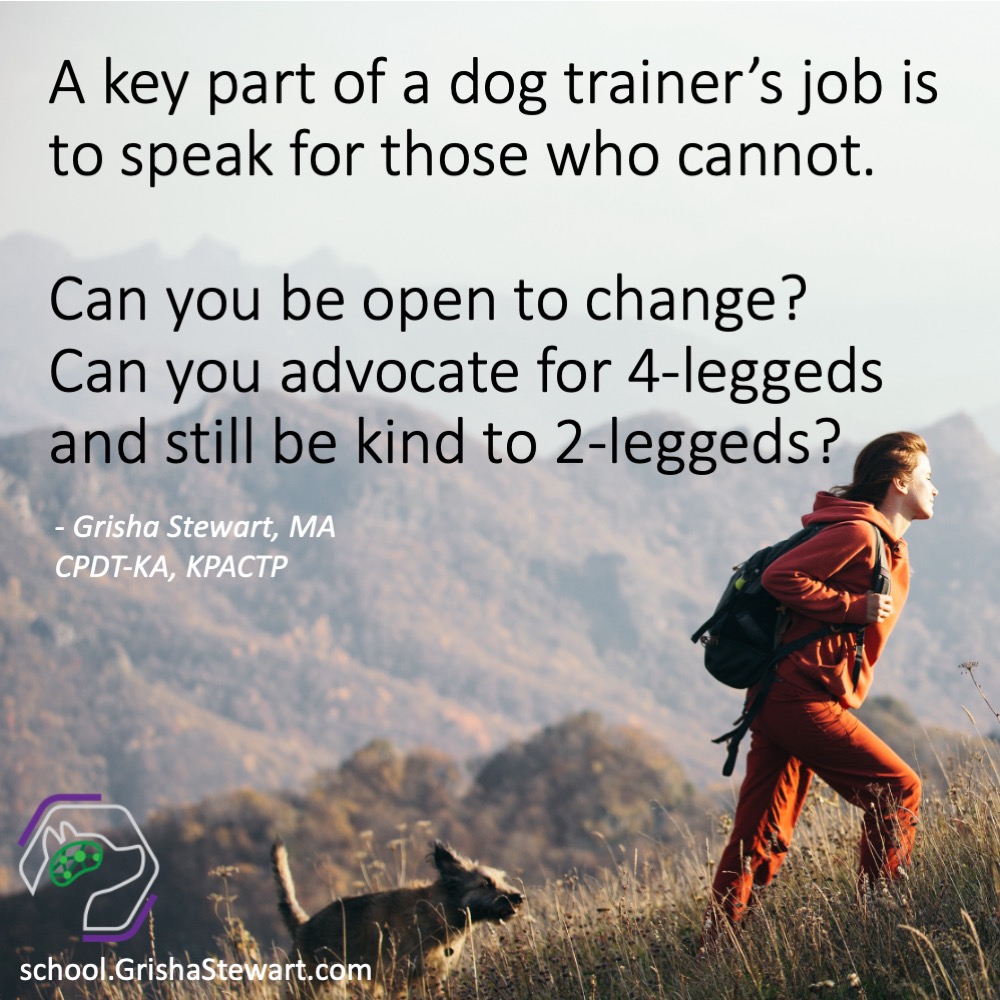 The phrase, “shut up and train” has been around for at least a decade or two, but it’s gotten in my head lately.
The phrase, “shut up and train” has been around for at least a decade or two, but it’s gotten in my head lately.
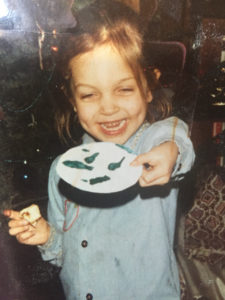 The darkroom is an environment to let our spirit take center stage, away from the stimulation of the outer world.
The darkroom is an environment to let our spirit take center stage, away from the stimulation of the outer world.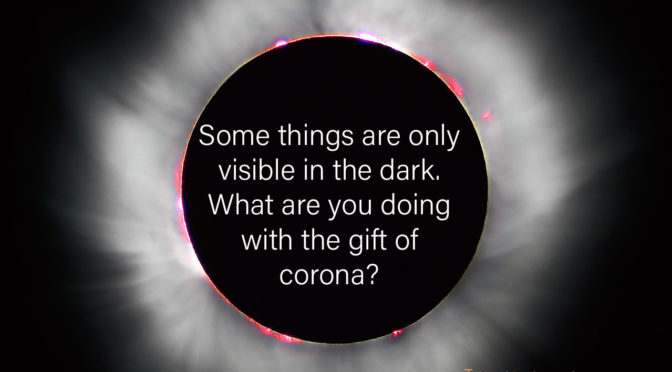
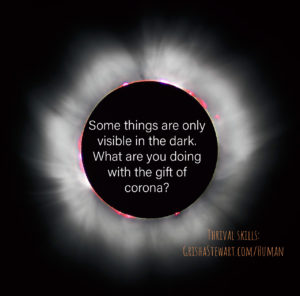 Did you know that the bright corona around a star is usually only seen during an eclipse, when everything else is dark?
Did you know that the bright corona around a star is usually only seen during an eclipse, when everything else is dark?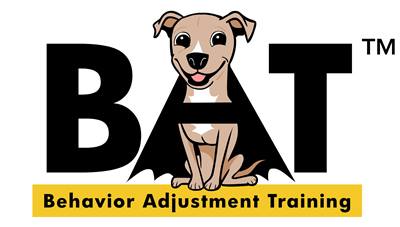
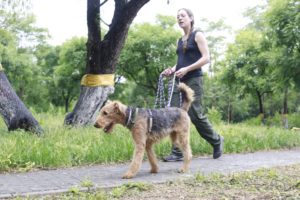
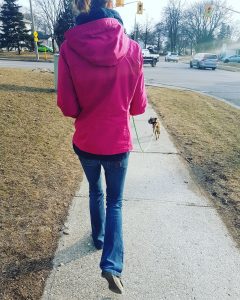
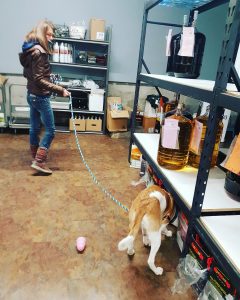
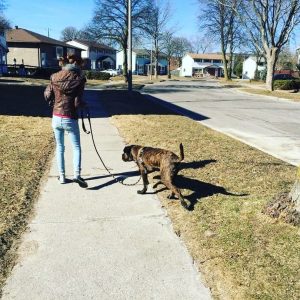 By law, service animals must be under control when working. That means we have to figure out ways to reestablish training, and ‘empowered partnership’ means we do it in a way that also meets the dogs’ emotional needs.
By law, service animals must be under control when working. That means we have to figure out ways to reestablish training, and ‘empowered partnership’ means we do it in a way that also meets the dogs’ emotional needs. I go through the handler’s stance by gliding my hands over their shoulders (with permission). I go over their arms, their wrists and hands. I tell them what their body is showing, their energy, and what I see with their body language. Dogs responds to this.
I go through the handler’s stance by gliding my hands over their shoulders (with permission). I go over their arms, their wrists and hands. I tell them what their body is showing, their energy, and what I see with their body language. Dogs responds to this. My questions are, ‘Are you in the moment?‘ and ‘Can you look at how you holding the leash?’ I slide my hands gently down the leash and pull a tad (this is where you are creating tension). I remind them, ‘Remember to be in the moment with your partner.’
My questions are, ‘Are you in the moment?‘ and ‘Can you look at how you holding the leash?’ I slide my hands gently down the leash and pull a tad (this is where you are creating tension). I remind them, ‘Remember to be in the moment with your partner.’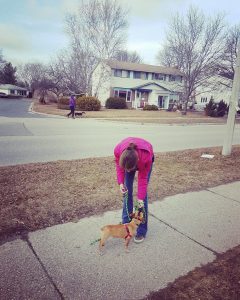 [Grisha’s note – touching the client can be distracting or it can be really useful. Please use your best judgement when working with clients and always get their consent, verbally and by observing their body language! Just as with the dogs, we need to respect their boundaries.]
[Grisha’s note – touching the client can be distracting or it can be really useful. Please use your best judgement when working with clients and always get their consent, verbally and by observing their body language! Just as with the dogs, we need to respect their boundaries.]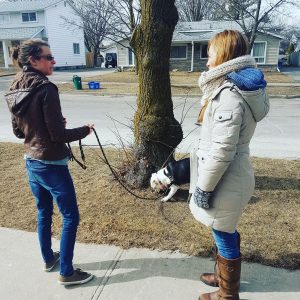 Usually the handlers are almost paranoid, edgy and worried about judgement when we start; trying to correct their dog every move they make.
Usually the handlers are almost paranoid, edgy and worried about judgement when we start; trying to correct their dog every move they make.
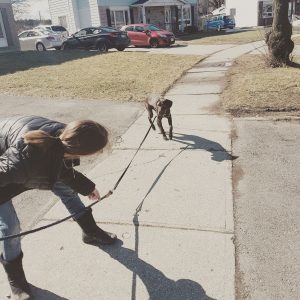 It takes no time for them to figure out and we have communicated clearly what we would like.
It takes no time for them to figure out and we have communicated clearly what we would like. No fighting, no pulling back and no frustration.
No fighting, no pulling back and no frustration.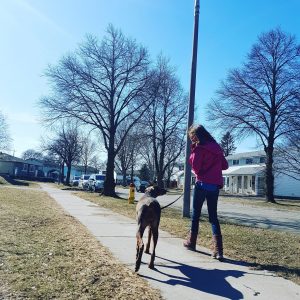 Even though some don’t have fearful or aggressive issues, the BAT leash protocols work excellent for unwanted behaviors and habits that have formed.
Even though some don’t have fearful or aggressive issues, the BAT leash protocols work excellent for unwanted behaviors and habits that have formed.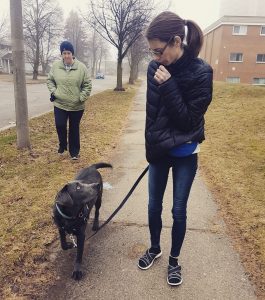 We need to give respect and empathy to these amazing working dogs. BAT is one great way to help these dogs, whether it’s maintenance BAT leash protocols or BAT aggressive and fearful adjustment training.
We need to give respect and empathy to these amazing working dogs. BAT is one great way to help these dogs, whether it’s maintenance BAT leash protocols or BAT aggressive and fearful adjustment training.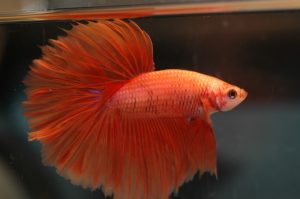
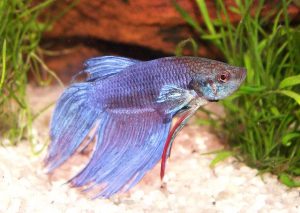
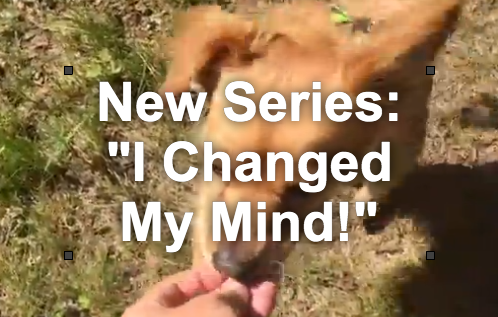
 Click here to Subscribe to my YouTube channel!
Click here to Subscribe to my YouTube channel!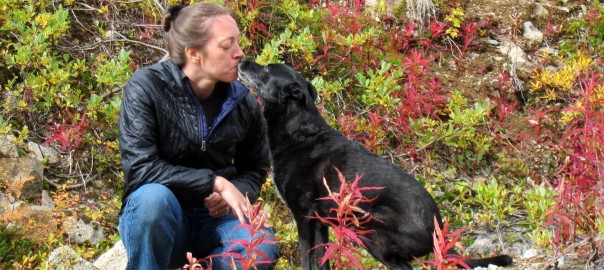

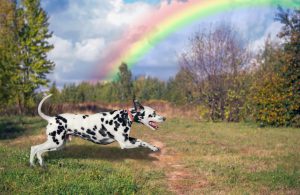
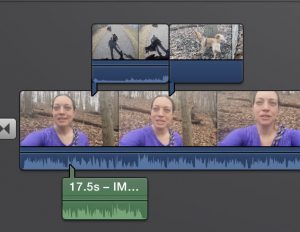
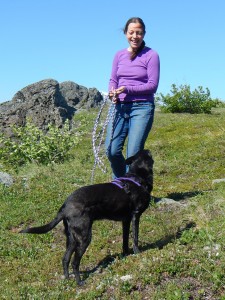
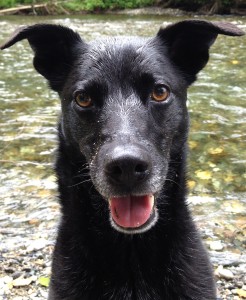
 ironic, right? That I am trying to use something negative to fix the problem of being too negative? I can do better than that. If I really want change, there’s a better way to teach, which I use all the time with dogs.
ironic, right? That I am trying to use something negative to fix the problem of being too negative? I can do better than that. If I really want change, there’s a better way to teach, which I use all the time with dogs. So what do I want to happen? What do I want to see? I do try to use positive phrasing when talking to people, but sometimes on social media, or with my husband, my inner 2-year-old comes out. No No NO.
So what do I want to happen? What do I want to see? I do try to use positive phrasing when talking to people, but sometimes on social media, or with my husband, my inner 2-year-old comes out. No No NO. Examples of positive posts and comments:
Examples of positive posts and comments: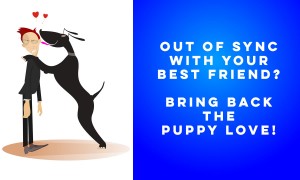
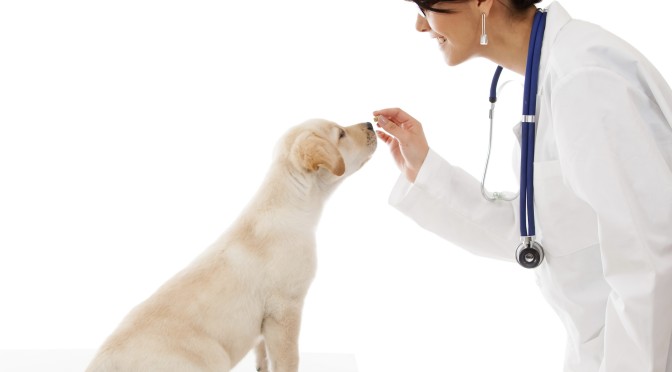
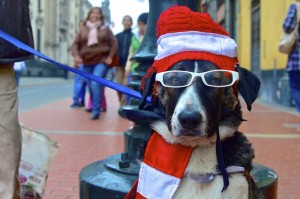
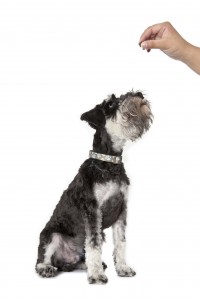 You might have read some of the traditional training books or watched a certain tv show that talks about training with treats as if it were a sloppy or mamby-pamby way to train dogs, whereas training with punishment means the dog works with you because they love you. The people who avoid treats just don’t know enough about *how* to train dogs with treats, and I thought I’d write a blog post to give an overview of how to precisely use reinforcers to get reliable dog behavior.
You might have read some of the traditional training books or watched a certain tv show that talks about training with treats as if it were a sloppy or mamby-pamby way to train dogs, whereas training with punishment means the dog works with you because they love you. The people who avoid treats just don’t know enough about *how* to train dogs with treats, and I thought I’d write a blog post to give an overview of how to precisely use reinforcers to get reliable dog behavior.
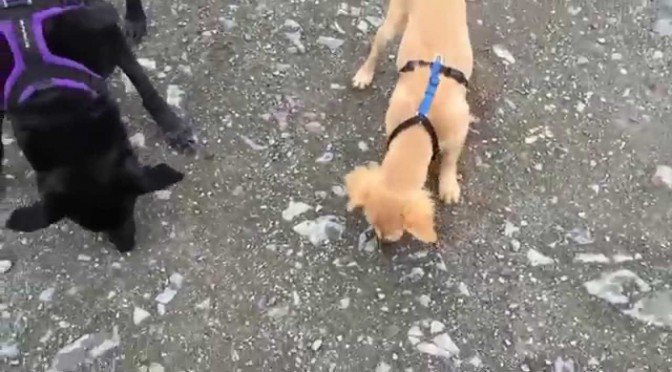
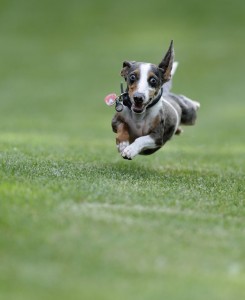
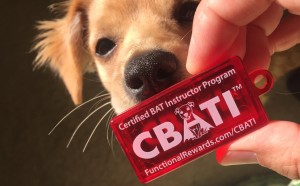
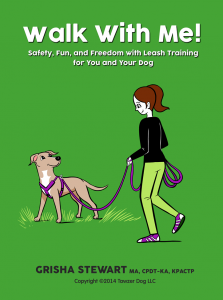
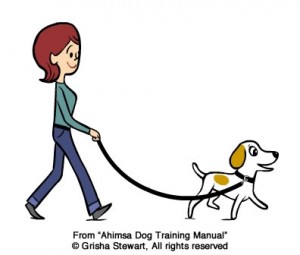
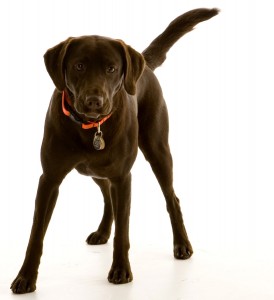 Do you love to pet your dog? Does your dog love it too?
Do you love to pet your dog? Does your dog love it too?  In any home, whether it has dogs in it or not, good manners are appreciated. Things like pushing past your parents to rush outside or bugging them for candy while they were working were probably not allowed when you were young and they show that your relationship with your dog is not as strong as it could be. There’s no need to yell at your dog when he does things like bolt out the door or bark, whine, or jump for attention. What you need to do is teach your dog how ask for
In any home, whether it has dogs in it or not, good manners are appreciated. Things like pushing past your parents to rush outside or bugging them for candy while they were working were probably not allowed when you were young and they show that your relationship with your dog is not as strong as it could be. There’s no need to yell at your dog when he does things like bolt out the door or bark, whine, or jump for attention. What you need to do is teach your dog how ask for 


 Firework noises have been exploding in my house all week.
Firework noises have been exploding in my house all week.

 The
The